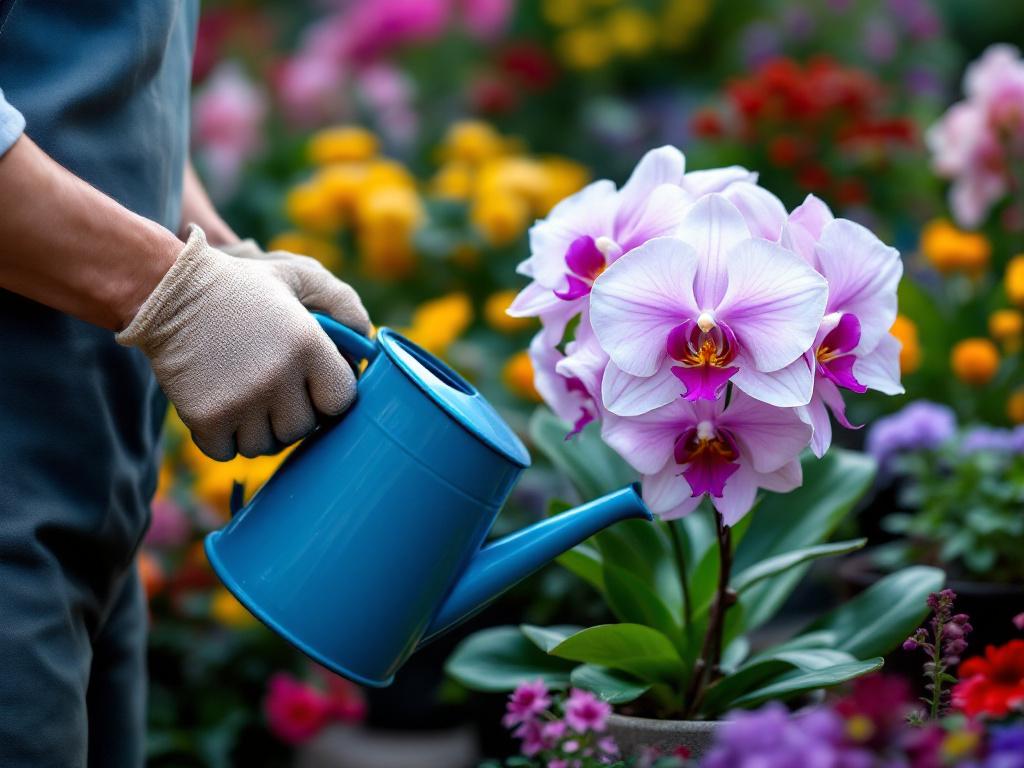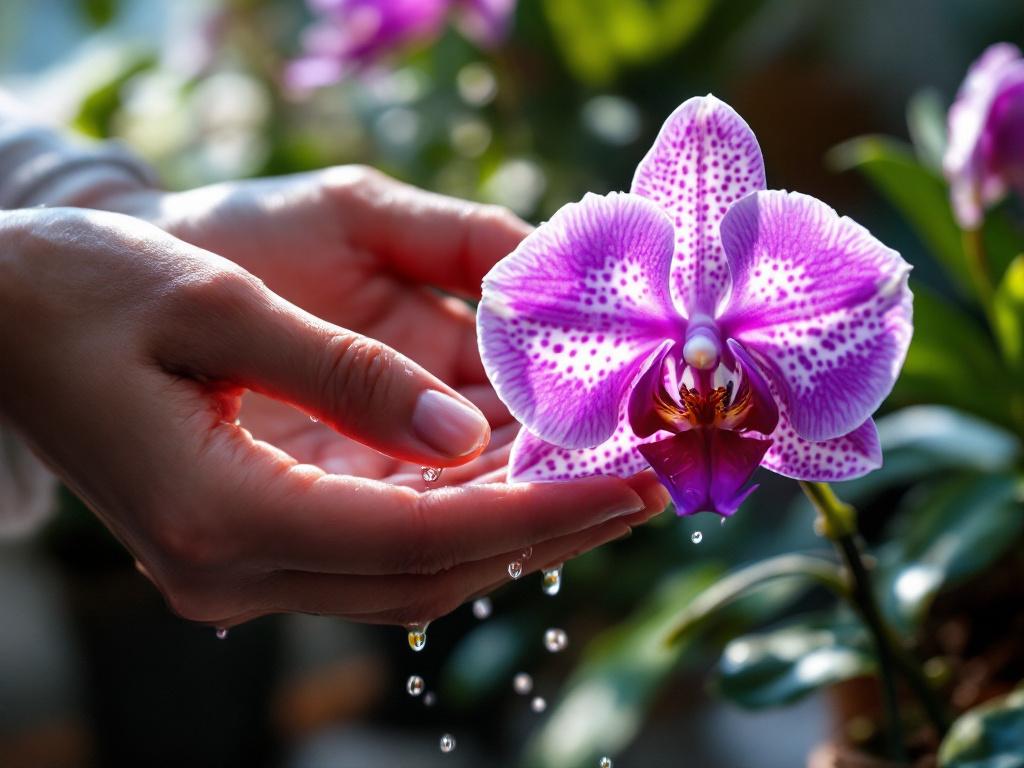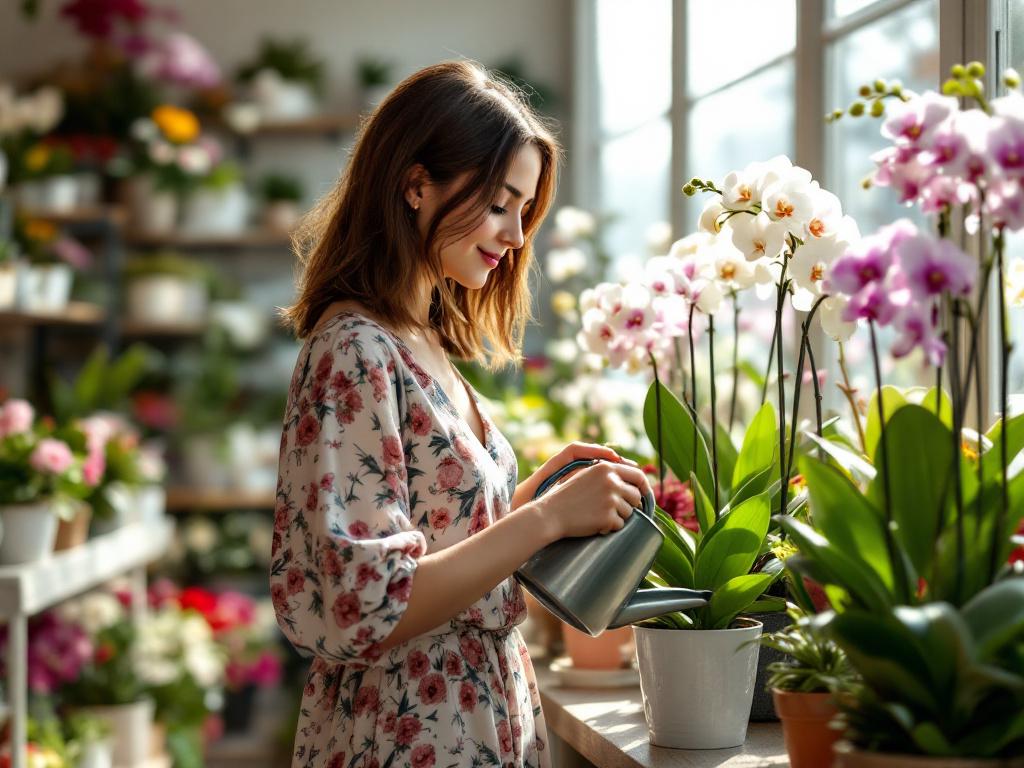
Watering is a fundamental aspect of orchid care, as it directly influences the plant’s health and growth. Orchids, belonging to an extensive family of flowering plants, display a diverse range of species, each with unique watering requirements. These differences are primarily informed by their natural habitats, where varying degrees of moisture and environmental conditions dictate their water needs.
For instance, epiphytic orchids, such as Phalaenopsis, naturally grow on trees in humid rainforests, making them accustomed to a consistent level of moisture. In contrast, terrestrial orchids, which grow in soil, may thrive in drier conditions and therefore require less frequent watering. Understanding the specific type of orchid is crucial for determining the right watering regimen. Generally, the focus should be on recreating their native conditions as closely as possible to ensure robust growth.

Environmental factors also play a significant role in establishing the watering schedule for your orchids. Humidity levels considerably affect the rate at which water evaporates from the plant. In environments with high humidity, orchids may require less frequent watering, while those situated in drier conditions will need more. Additionally, light exposure can impact their moisture needs; for instance, orchids that receive bright, indirect light often dry out faster and need more regular watering. Temperature fluctuations also influence the moisture levels in both the air and the medium in which orchids are planted. Warmer temperatures generally accelerate the evaporation of moisture, thus increasing the water requirement.
In essence, understanding the specific watering needs of your orchid involves acknowledging its natural environment and being aware of environmental factors that influence moisture levels. By tailoring your care routine based on these principles, you can promote the health and vibrant growth of your orchid.
Signs Your Orchid Needs Watering
Watering your orchid correctly is essential for its health and blooming potential. The key to maintaining a thriving orchid lies in understanding the indicators that suggest it is time to provide water. One of the primary signs to observe is the moisture level of the soil. Orchids are generally potted in a well-draining medium, such as bark or sphagnum moss, which allows for air circulation. To determine if your orchid requires watering, insert your finger about an inch into the medium. If the soil feels dry at this depth, it is time to water. Conversely, if it is still moist, it is advisable to wait a few days before checking again.

Another critical indicator is the appearance of the roots. Healthy orchid roots are usually green when hydrated and turn silvery-gray as they dry out. Inspecting the roots through the pot can provide insight into the plant’s hydration status. Be mindful, however, that over-watering can cause roots to appear dark and mushy, suggesting rot. Thus, the visual state of the roots is a valuable cue for gauging the need for watering.
The overall health of the orchid is equally telltale. If your plant’s leaves start to appear wrinkled or leathery, this may indicate dehydration. Alternatively, yellowing leaves often signal over-watering. Striking a balance is crucial, as both extremes can jeopardize your orchid’s wellbeing. Additionally, it may be beneficial to employ a moisture meter for more precise readings, particularly if you find it challenging to assess moisture by touch. Recognizing these signs is vital to ensure your orchid thrives and flourishes.
The Best Practices for Watering Your Orchid
Watering orchids requires a careful approach to ensure that these delicate plants thrive. One key principle is to water your orchid only when necessary. This often means checking the moisture level of the potting medium before introducing water. The roots of an orchid are adapted to dry periods, making it crucial to allow the potting medium to dry out slightly between watering sessions. This practice helps prevent root rot, which is a common issue among orchid growers.

The ideal method for watering orchids is to use a watering can with a narrow spout, which allows for precision. When using the watering can, it is important to water evenly without flooding the plant. Ensure that water flows through the drainage holes of the pot; this not only helps hydrate the roots but also discards excess salts that can accumulate in the potting medium. Typically, a thorough watering session is better than frequent, shallow watering, as it promotes healthier root growth and encourages the plant to seek moisture deeper in the potting medium.
Seasonal changes significantly influence watering frequency. In the warmer months, orchids generally require more frequent watering due to increased evaporation rates and higher temperatures. During the winter, however, the plant will enter a period of dormancy, requiring less water. Observing the changes in temperature and humidity will help you adjust your watering schedule accordingly. By monitoring leaf health and potting medium moisture, you can create a responsive watering routine tailored to your orchid’s needs throughout the year.
Common Mistakes to Avoid When Watering Orchids
Watering orchids requires careful consideration and attention to detail, as numerous common mistakes can jeopardize their health and vibrancy. One of the most prevalent issues is over-watering, which is often fueled by the misconception that orchids require frequent watering. In reality, these plants thrive in a well-draining medium that allows their roots to dry out between waterings. To avoid this mistake, it is advisable to periodically check the moisture level of the potting mix. A simple finger test can reveal if the medium is damp or dry, guiding caregivers on when to water.

Another frequent error is using the wrong type of water. Tap water may contain chlorine, fluoride, and other chemicals harmful to orchids. Instead, rainwater, distilled water, or filtered water are often recommended, providing a safer alternative. Additionally, let the water sit for a day or two to allow any chemicals to dissipate, ensuring that your orchids receive the purest possible hydration.
Seasonal changes and variations in indoor environments can also impact watering routines. Many caregivers fall into the trap of maintaining a consistent schedule without adjusting to changes in temperature, humidity, and light conditions. For instance, in warmer months, orchids generally require more frequent watering, while during cooler months, the needs may decrease significantly. Observing these environmental factors closely will help caregivers determine the appropriate watering frequency.
Lastly, neglecting to monitor the root health can lead to dire consequences. Healthy roots are typically light green, while dark or mushy roots indicate over-watering and rot. By avoiding these common mistakes and implementing preventive measures, orchid enthusiasts can cultivate thriving plants and enjoy the beauty of these remarkable flowers for years to come.